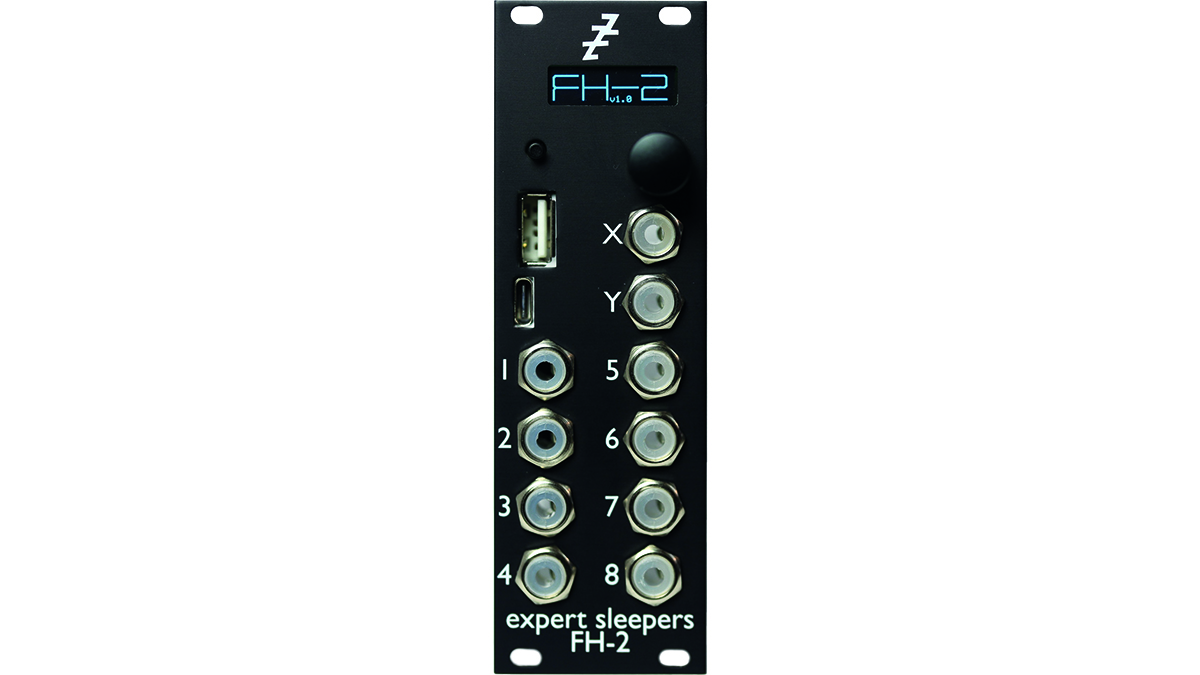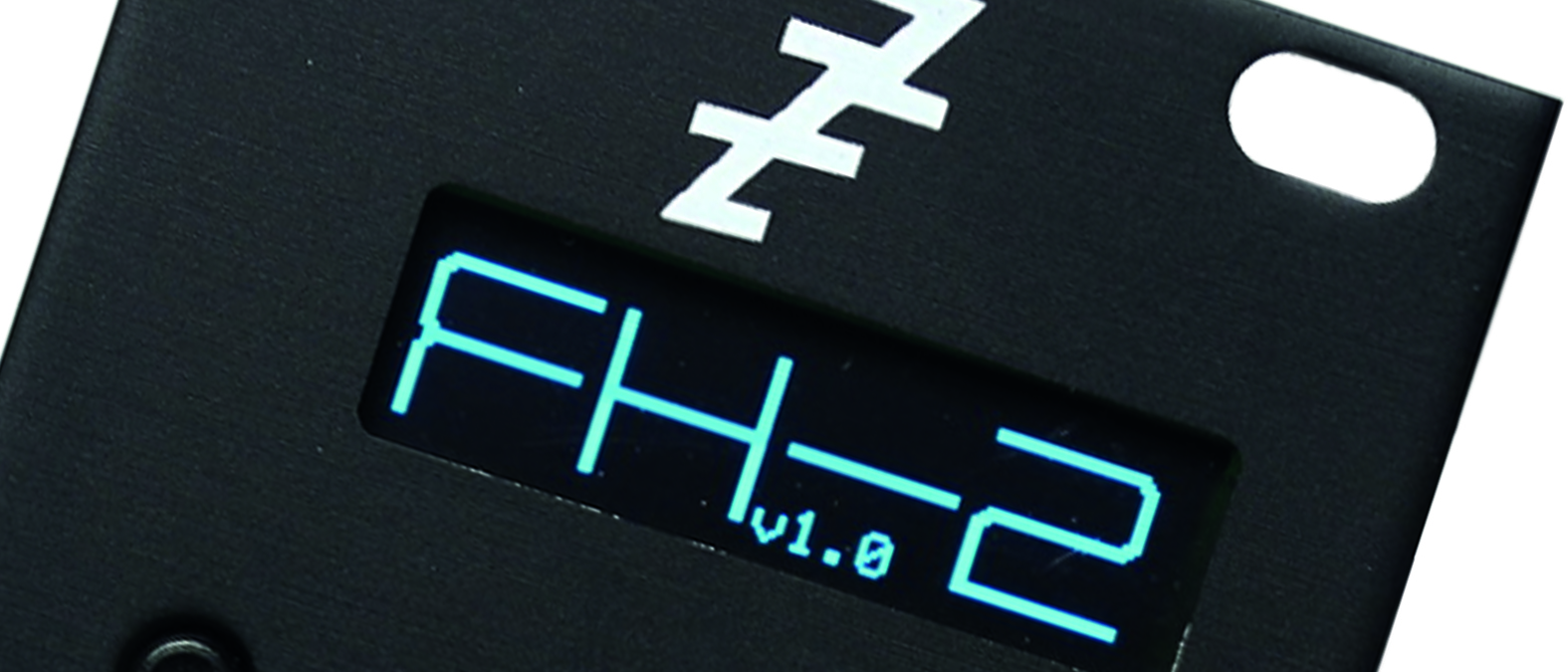MusicRadar Verdict
If you have more than a small handful of devices and would like them all to play nicely together the FH-2 is by far the best option .
Pros
- +
Sturdy and small at just 8hp.
- +
Connects all your devices.
- +
Easy to navigate.
Cons
- -
Small screen.
MusicRadar's got your back
Expert Sleepers FH-2: What is it?
If you have ever looked around your studio space and felt disheartened at the thought of trying to wire up all your devices in a usable way then the FH-2 might be just the tool you need. It’s designed to be a connectivity hub, allowing you to hook up devices of all types, converting signals as needed for optimum communication.
The FH-2 itself is an 8hp module, built with typical Expert Sleepers quality, that houses a number of ports. The FH-2 works as both USB host and device (at the same time if needed) and as such offers a USB and a USB-C port. There is no MIDI DIN port, so MIDI adapters will be needed. This is no big deal and probably helps keep the module so svelte.
What's it all about?
Use cases for the FH-2 are many and varied but for us the main setup is to take control signals from a MIDI keyboard and mpe controller, then into the FH-2, sending out CVs to our modular system. This doesn’t sound all that special, however the FH-2 will convert pretty much every attribute you need, including velocity, pitch and even accents for drum triggers.
Clocks can be internally generated or tapped, or sent from another source, be it from a MIDI controller, computer or modular.

Expert Sleepers FH-2: Performance and verdict
There is some setup and configuration involved with this device but it isn’t overly taxing. The screen, although small, is also clear and bright. This is typical of Expert Sleepers devices, so if you’ve ever played with one of the Disting family of modules you’ll find your way around in no time.
Menus are clear and easily navigable but if you prefer a more traditional computer-style interface you can use the Mac or PC software instead, sending the config files as sysex via MIDI. Either method works well, so adds to the overall versatility of the FH-2.
On top of all the connectivity options, the FH-2 can produce time-based outputs, such as synced LFOs, Euclidean patterns and even arpeggiated patterns. While this may not be the primary focus of the module, it is nice to have some extra sources of modulation and pattern generation.
Quietly powerful
These types of utility and conversion modules aren’t generally sexy or exciting on the face of it but when you realise you can hook up all your gear it suddenly opens up new realism of musical possibility. Knowing you can use your mpe controller to generate CV, all clocked to a third device or your DAW, feels kind of special.
That said, it’s also one of those things that soon falls away into the background, as it should, and just does the task you set it to do without you having to concern yourself with it. When reviewing gear we want to see if the device in question encourages creative freedom and it’s very clear that, while it makes no sound at all, the FH-2 is definitely one module that enhances creative output.
MusicRadar verdict: If you have more than a small handful of devices and would like them all to play nicely together the FH-2 is by far the best option.
Expert Sleepers FH-2: Hands-on demos
Expert Sleepers
DivKidVideo
Color My Sound
Expert Sleepers FH-2: Specifications
- KEY FEATURES: Multiple concurrent connections, can generate or follow a clock, onboard configuration, or via computer, it’s a bridge between all your devices
- CONTACT: Expert Sleepers
"I didn't know you could change the tempo in Pro Tools, so I just made all my songs at 120bpm": Super-producer Benny Blanco reveals the surprising reason why most of his early hits are the same tempo
The Curse of Coachella: Bad sound, bad gigs and even worse audiences - Is Coachella now the worst festival in the world?
“FORMAL CHARGES OF OVERPLAYING": Zak Starkey has been sacked from The Who










